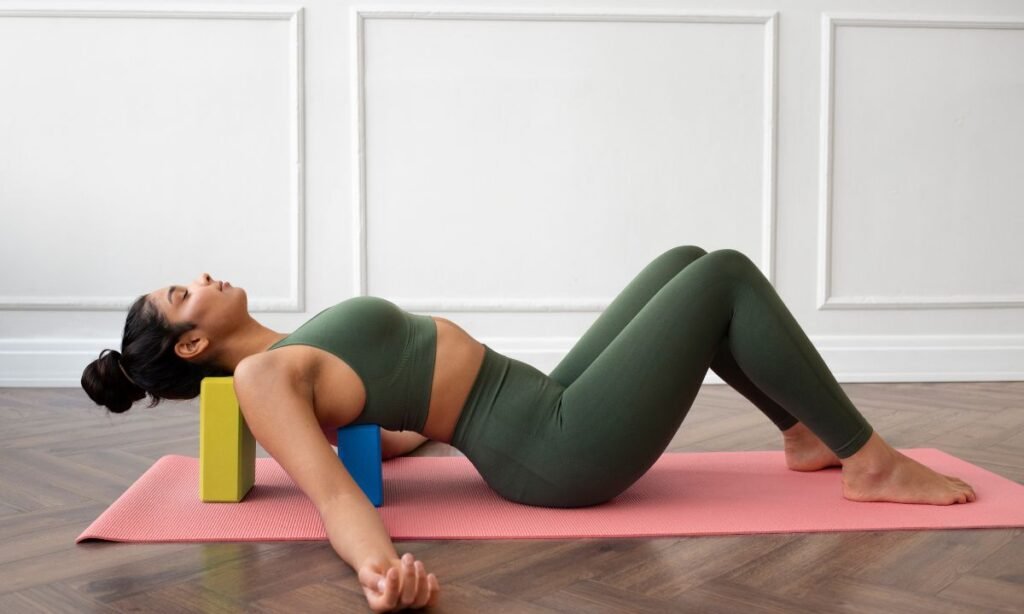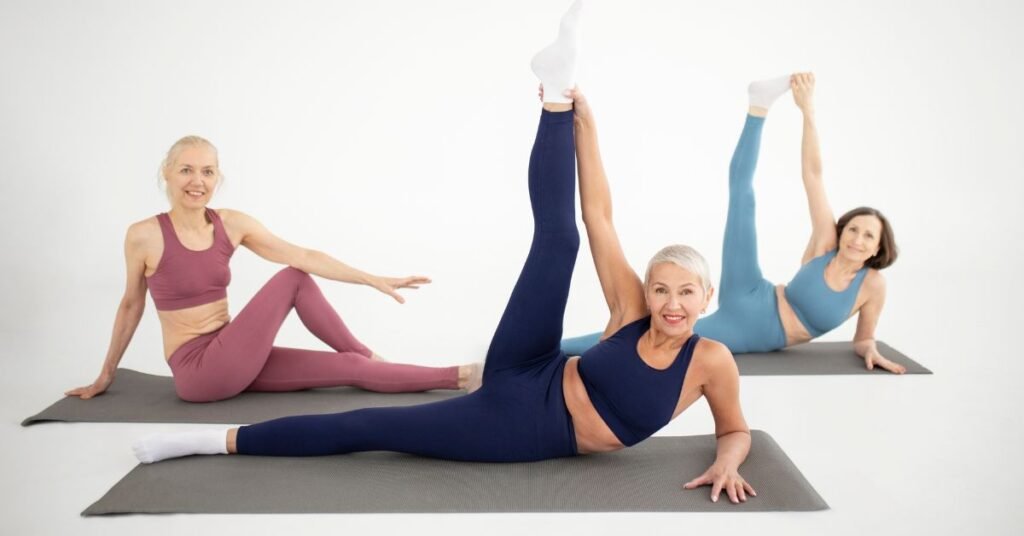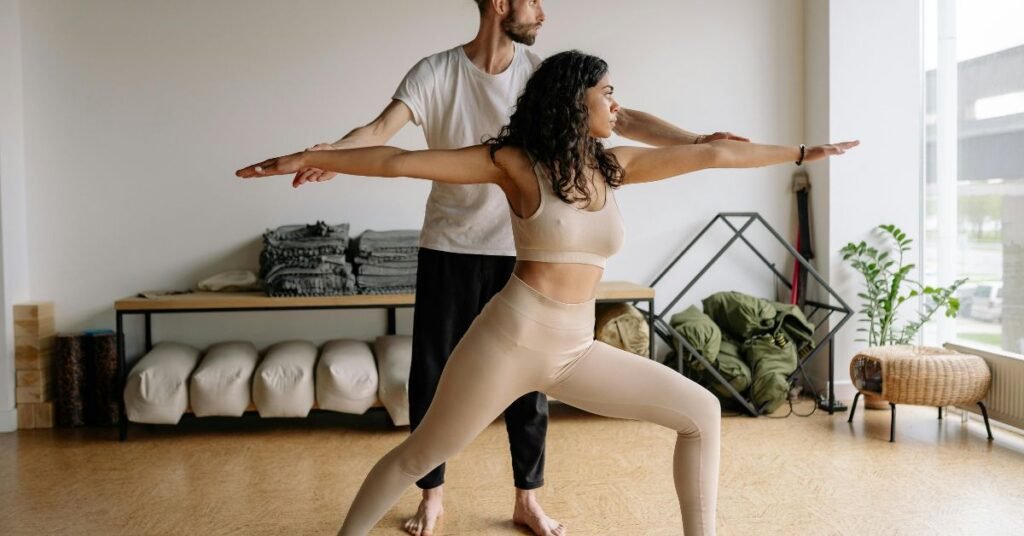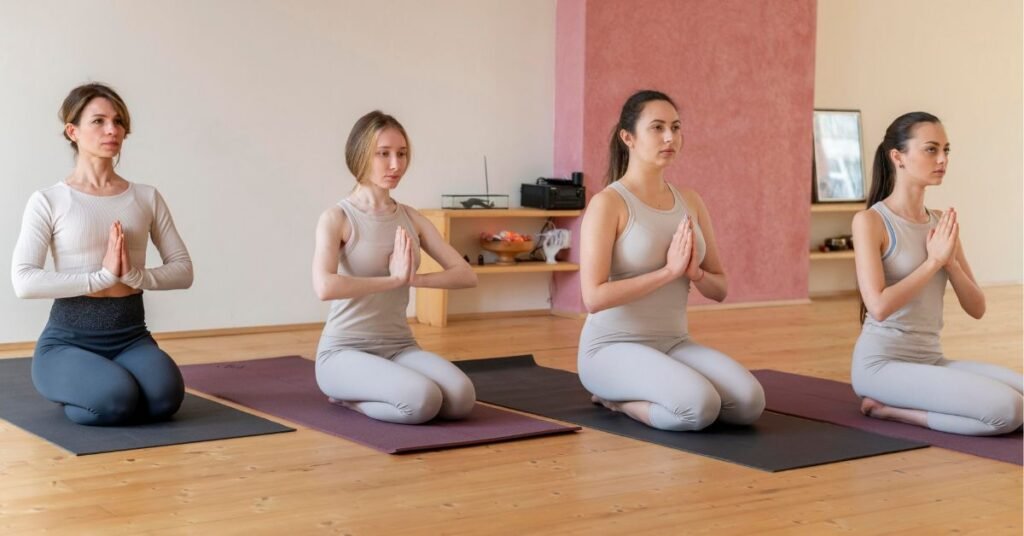Introduction
Life is stressful. Between work, family, and daily responsibilities, our bodies and minds often feel drained. What if there was a way to release stress, heal the body, and relax deeply—all at the same time? Enter restorative yoga.
Restorative yoga is a gentle yet powerful practice designed to help you rest, heal, and restore balance. It’s not about sweating or burning calories; instead, it focuses on deep relaxation, gentle stretching, and mindful breathing. Unlike more active styles of yoga, restorative yoga uses props like bolsters, blankets, and blocks to support the body in comfortable poses for extended periods.
In this blog post, we’ll explore:
- The history of restorative yoga
- Restorative yoga poses for healing and relaxation
- Practical tips to get the most out of your practice
By the end, you’ll understand why restorative yoga is a game-changer for stress relief, pain management, and overall well-being.
The History of Restorative Yoga
The Origins
Restorative yoga traces its roots to B.K.S. Iyengar, one of the most influential yoga teachers of the 20th century. Iyengar developed a method of yoga that used props to support the body and enhance alignment, making yoga accessible to people of all ages and abilities.
One of Iyengar’s students, Judith Hanson Lasater, expanded on this method and introduced restorative yoga as a distinct practice in the 1970s. She recognized the importance of relaxation and recovery in modern life and helped popularize restorative yoga worldwide.
The Philosophy Behind Restorative Yoga
The core philosophy of restorative yoga is simple: When the body is fully supported, the mind can relax. This practice activates the parasympathetic nervous system (PNS), the “rest and digest” mode. Unlike high-intensity workouts that trigger the fight-or-flight response, restorative yoga encourages deep relaxation, healing, and stress reduction.
Benefits of Restorative Yoga
Restorative yoga isn’t just about lying around on a mat—it offers real, science-backed benefits for your body and mind. Here’s why you should try it:
1. Relieves Stress and Anxiety
Restorative yoga lowers cortisol levels (the stress hormone), helping you feel calmer and more centered. Studies show that just a few minutes of restorative yoga can reduce anxiety and improve mood.
2. Eases Muscle Tension and Pain
If you struggle with back pain, headaches, or muscle tightness, restorative yoga can help. The gentle poses encourage blood flow and relaxation, relieving built-up tension in your body.
3. Improves Sleep Quality
Struggling with insomnia? Restorative yoga prepares your body for deep sleep by calming the nervous system and slowing down your breath.
4. Enhances Flexibility Without Strain
Unlike intense stretching exercises, restorative yoga gradually opens up tight areas safely and gently. Over time, this improves mobility and flexibility.
5. Boosts the Immune System
Chronic stress weakens the immune system. Restorative yoga helps boost immunity and supports overall health by reducing stress.
6. Encourages Mindfulness and Self-Awareness
Restorative yoga is an excellent way to connect with yourself, be present, and practice self-care.
Readmore: How Yoga Can Help Improve Your Posture
Readmore: Exploring the Spiritual Path of Yoga
Essential Restorative Yoga Poses
Here are some simple yet effective restorative yoga poses to help you relax and heal:
1. Supported Child’s Pose (Balasana)
How to Do It:
- Place a bolster or folded blanket lengthwise on your mat.
- Sit on your heels and rest your torso over the bolster.
- Let your arms relax by your sides and breathe deeply.
Benefits:
- Releases tension in the lower back
- Promotes relaxation
2. Legs-Up-The-Wall Pose (Viparita Karani)
How to Do It:
- Sit sideways next to a wall and swing your legs up.
- Lie back and let your arms rest by your sides.
- Stay in this pose for 5-10 minutes.
Benefits:
- Reduces swelling in the legs
- Improves circulation
- Calms the nervous system
3. Supported Reclining Butterfly (Supta Baddha Konasana)
How to Do It:
- Lie on your back with a bolster under your spine.
- Bring the soles of your feet together and let your knees drop open.
- Place pillows under your knees for support.
Benefits:
- Opens the hips and chest
- Relieves tension in the lower back
4. Corpse Pose (Savasana)
How to Do It:
- Lie flat on your back with arms relaxed by your sides.
- Use a bolster under your knees for added comfort.
- Focus on your breath and let your body fully relax.
Benefits:
- Deep relaxation
- Reduces stress and fatigue
Readmore: How to Incorporate Yoga into Your Busy Schedule
Readmore: 5 Amazing Reasons to Try Hot Yoga
Tips for a Deeply Restorative Practice
Want to get the most out of your restorative yoga session? Keep these tips in mind:
1. Use Props for Maximum Comfort
Bolsters, blankets, and blocks make a huge difference in supporting your body and preventing discomfort.
2. Hold Poses for Longer
Unlike other yoga styles, restorative poses are held for 5-20 minutes to allow deep relaxation.
3. Focus on Your Breath
Slow, deep breathing enhances relaxation and calms the mind. Try inhaling for 4 seconds, holding for 4 seconds, and exhaling for 6 seconds.
4. Practice in a Quiet, Cozy Space
Dim the lights, play soft music, and use essential oils like lavender to set the mood.
5. Let Go of Expectations
Restorative yoga is about being, not doing. Release the need to “achieve” a pose and simply enjoy the experience.
Frequently Asked Questions (FAQs)
Q1. Is restorative yoga suitable for beginners?
Yes! Restorative yoga is perfect for beginners because it focuses on relaxation and gentle movements. No prior experience is needed.
Q2. How often should I practice restorative yoga?
You can practice restorative yoga as often as you like! Even 10-15 minutes a day can have significant benefits.
Q3. Do I need special props for restorative yoga?
While props like bolsters and blankets enhance comfort, you can use pillows and household items as substitutes.
Q4. Can restorative yoga help with chronic pain?
Yes, restorative yoga can be beneficial for managing chronic pain by reducing tension and promoting relaxation.
Q5. Is restorative yoga a workout?
Restorative yoga is more about relaxation than fitness, but it helps with flexibility, stress relief, and overall well-being.
Readmore: Half Boat Pose (Ardha Navasana)
Readmore: 7 Yoga Poses to Boost Self-Confidence & Power
Conclusion
Restorative yoga is a powerful yet gentle practice that promotes deep relaxation, healing, and stress relief. Whether you’re dealing with anxiety, chronic pain, or sleep issues, incorporating a few restorative poses into your routine can make a big difference.
Give yourself permission to slow down, breathe, and restore. Your body and mind will thank you!
Have you tried restorative yoga before? Share your experiences in the comments below! 😊

Sonu is a passionate yoga teacher with over 6+ years of experience helping individuals find balance, strength, and inner peace through the transformative power of yoga. As the creator of Pure Yoga Vibes, Sonu shares expert insights, inspiring practices, and a wealth of knowledge to support your wellness journey. Dedicated to creating a space for growth and mindfulness, Sonu’s mission is to make yoga accessible and enjoyable for everyone. For inquiries or collaborations, feel free to reach out at contact@pureyogavibes.com.



